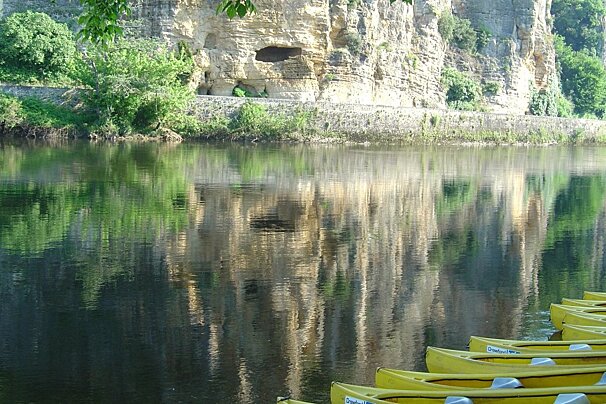
Canoes Loisirs Watersports, Vitrac
Offering various routes along the Dordogne river to enjoy the sights of the Perigord Noir region. Discover hidden treasures during a relaxing journey down the river.

© Vintage Travel
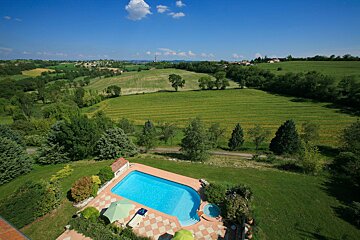
© Vintage Travel

© Vintage Travel
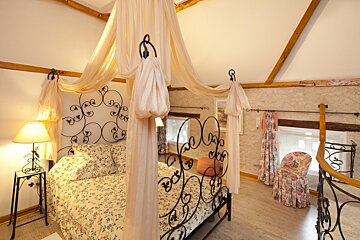
© Vintage Travel

© Vintage Travel

© Vintage Travel

© Vintage Travel

© Vintage Travel

© Vintage Travel

© Vintage Travel

© Vintage Travel

© Vintage Travel

© Vintage Travel
1 bedroom Villa in Dordogne. Sleeps 2
This charming dovecote restoration will delight honeymooners or couples seeking a romantic break. Situated in an elevated position and surrounded by rolling countryside, it is constructed from gleaming golden stone and features a most distinctive tall turreted roof.
Inside, great care has gone into the design to maximise space and light. The open-plan living area features a stone floor, exposed stone walls, and wood beams that support the high ceiling, creating a bright and airy atmosphere.
The well-designed kitchen is a highlight, with primrose yellow units paired with beechwood surfaces, complemented by bright fabrics throughout the villa.
Le Colombier is located just under 2km from Castelnau-de-Levis, where you can find all essential supplies, and only 7km to the east lies Albi. The town’s heart is surrounded by a sea of red rooftops, with the impressive red brick cathedral standing tall at its centre, built to mirror the one in Toulouse.
Be sure to visit the tranquil walled cathedral gardens, where rose arbors, 18th-century statues, plane trees, and a fountain create a peaceful retreat. Also worth a visit is the 11th-century Pont Vieux, said to be the oldest bridge in France, which spans the Tarn River.
Private heated swimming pool (9m x 4m) with Roman steps, surrounded by terrace.

Offering various routes along the Dordogne river to enjoy the sights of the Perigord Noir region. Discover hidden treasures during a relaxing journey down the river.

From tree climbing to paintballing and even via ferrata, the Foret des Ecureuils Adventure Park has plenty of offer all ages.

This wildlife park is dedicated to the Barbary Macaque monkey who roams free in the 20 hectares of woodland.
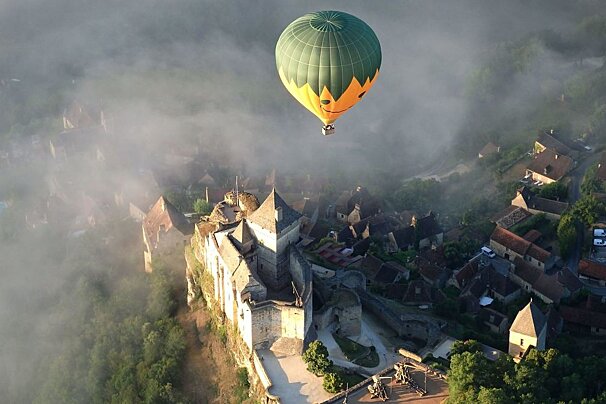
With a fleet of five hot air balloons this company can take groups of 2 or 3 passengers up into the air above La Roque Gageac and the Dordogne river to enjoy a birds-eye view of this beautiful area.

Hire a canoe or kayak from this company and you can enjoy a gentle river cruise and the chance to explore the wonderful Dordogne river and its banks.
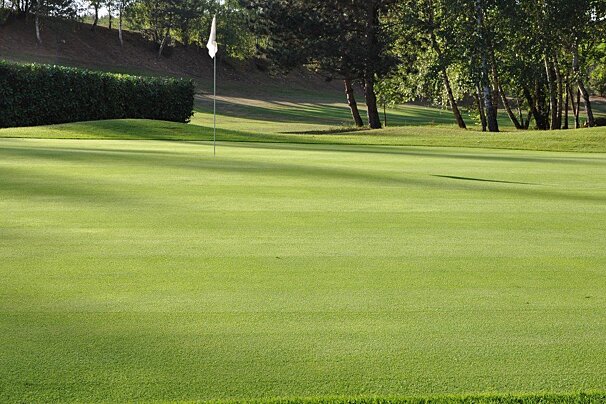
Open every day of the year this 9-hole, par 35, course is set in the lush countryside of the Dordogne and the grounds of Chateau les Merles.

This elegant and sophisticated two Michelin star restaurant offers creative dishes designed by chef Cédric Béchade, who plays with colours and textures in his cuisine.
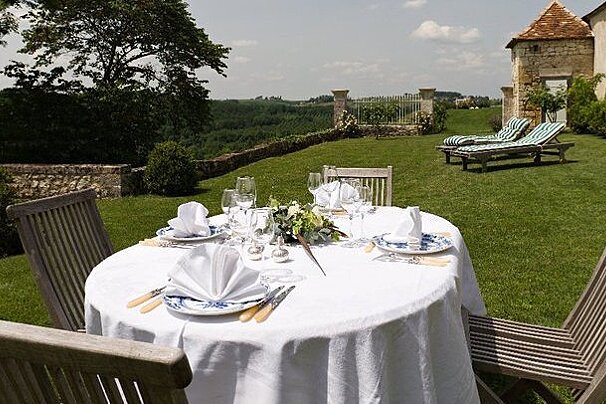
The dining rooms allow for views of the surrounding vineyards and rolling hills. Drinks can also be enjoyed in the small library or among the chestnut trees.

Within the hotel grounds of the picture perfect Moulin de l'Abbaye hotel, set alongside the River Dronne and with a dining room oozing class and a waterside terrace with shaded trees, it would be difficult to find a spot in the world more idyllic than this!

At the top of the hills of Monbazillac, surrounded by vineyards, the shady terraces and dining rooms of this restaurant offer an unforgettable panoramic view. The chef, Marie Rougier, produces a fine dining menu from seasonal products.
Located in an old kindergarten in the heart of the enchanting village of Saint-Medard, on a hillside overlooking the Vallee du vert, with a beautiful terrace for dining in warm weather or taking refuge by the fire on chillier days.

Founded in 1848, this restaurant is one of the oldest in the town of Saint-Émilion, a UNESCO World Heritage site. French creative cuisine is served in its terrace and three dining rooms, accompanied by wines from the region.
The beautiful Abbeye de Beaulieu-en-Rouergue was established in 1144 in the valley of the Seye by the Bishop of Rodez. This Cistercian abbey had a successful existence for many years and was expanded in the 17th and 18th centuries. It went into decline as the monastic discipline was relaxed but was saved from ruin in 1960 when it was subject to extensive renovation and turned into a contemporary arts centre which holds a number of temporary exhibitions each year.
In Cajarc, the George Pompidou arts centre holds a number of significant art exhibitions each year designed at promoting new trends in contemporary art. It was founded in 1989 and named after the former Prime Minister who spent time here.
Originally built by the lords of La Popie from the 9th century onwards, the château was sold to the de Gourdon family in the 12th century where it remained until the 17th century. Significant restoration work was undertaken in the late 19th and early 20th centuries to maintain this Renaissance palace. Today, a number of Renaissance frescoes discovered over the years can be viewed in its rooms.
This prehistoric cave is situated on a limestone plateau in the Lot valley, in an area speckled with prehistoric remains and megalithic monuments. The cave was discovered in 1965 and is a remarkable subterranean museum. Over 400 metres in length, it preserves human footprints, clay quarries, fireplaces, tools, and many bones. Some of the cave network was used as tombs; nearly 30 skeletons have been discovered dating as far back as the Copper Age. There is also a museum with a good archaeological collection.
This huge cave , more than two kilometres long, has seven large halls open to the public. Its lower prehistoric chambers were discovered by teenagers in the 1920s. They contain prehistoric paintings and sketches, human footprints and limestone rock formations which include cave pearls. The huge Chapelle des Mammoths is the first stop, which contains impressive art that uses the contours of the rock perfectly. There are literally hundreds of drawings. The museum is good, displaying a diverse collection of artefacts.
Literally titled the 'Unusual Museum', it lives up to its name. Its creator, Bertrand Chenu, is humorous and inventive man who has transformed everyday objects, hanging them from the cliffside, into French phrases, puns or quirks of life. A strange but interesting detour from the usual tourist attractions in the region!

Formerly the capital of the old province of Quercy, Cahors is the largest town in the Lot valley. The site was inhabited by the Cadurci tribe in Roman-Gaul times.

The main town of the area between 1800 and 1926, it was all but destroyed during the floods of 1930, which caused devastation across the entire south west of France and counted as a 100 year flood.

Perched on the side of a cliff, in a gorge above the river Alzou, this medieval town has a breathtaking setting.

The riverside town of Saint-Céré is a lovely place to base yourself for excursions in the region. The La Bave river winds its way through the centre of the town and its old buildings have been carefully restored, retaining their timber vaulting or Renaissance stonework.

Picturesque village typical of Quercy. The traditional houses have corbelled fronts, brown-tiled roofs and pigeon lofts built into their walls.

Carennac has been previously voted 'One of the 'Most Beautiful Villages in France' and it's easy to see why. The blonde stone and red-brown roofs of its buildings have tall chimneys and are adorned with creepers that turn red in the autumn.